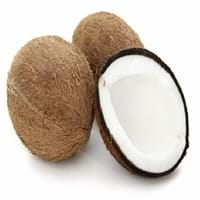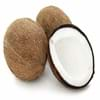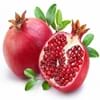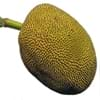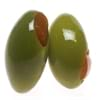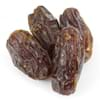Health Benefits
Cancer prevention, Diarrhea treatment, Muscle pain relief, Piles treatment, Prevents constipation, Skin cleansing, Ulcer treatment
Acidity treatment, Acts as natural antibiotic, Anti-oxidant properties, Aphonia treatment
General Benefits
Controls blood pressure, Digestive aid, Maintains healthy cholesterol level, Strengthens bones
Anti-inflammatory properties, Body hydration, Boosts immune system, Controls blood sugar levels, Digestive aid, Fights against infections, Flu treatment, Healing of wounds, Helps in weight loss, Maintains healthy cholesterol level
Skin Benefits
Anti-aging benefits, Hydrates skin, Skin rejuvenation
Anti-aging benefits, Heals sunburn, Hydrates skin, Reduces wrinkles, Skin rejuvenation, Skin revitalization, Treatment of skin diseases
Hair Benefits
Prevents hair loss, Shiny hair, Softening mask
Promotes longer and healthier hair, Regulates hair growth, Rejuvenates scalp, Shiny hair, Treatment of dandruff
Allergy Symptoms
Abdominal pains, Decrease in blood pressure, Dizziness, Hives, Itching of mouth, Lightheadedness, Swelling, Swelling of mouth, tongue or lips, Weak or racing pulse, Wheezing
Abdominal pains, Breathing difficulty, Itching in tongue and other parts of mouth, Nasal congestion, Nausea, Runny nose, Vomiting
Side Effects
Headache, Intense headache, Tooth decay
Allergic reaction, Indigestion, Weight gain
Best Time to Eat
As a snack in the late afternoon, Don't consume at night and before bed, Eat the fresh ones, avoid mixing with any other foods, don't eat after meal.
Along with meal, Best if taken as a breakfast (or empty stomach), As a snack in the late afternoon, Morning time (before lunch)
Vitamin B5 (Pantothenic Acid)
Vitamin C (Ascorbic Acid)
Vitamin K (Phyllochinone)
Calories in Fresh Fruit with Peel
Not Available
Calories in Fresh Fruit without Peel
Calories in Frozen Form
Not Available
Type
Berry, Tropical
Tree fruit, Tropical
Season
All seasons
All seasons
Varieties
Cavendish Bananas, Lady Finger Bananas, Pisang Raja, Williams Bananas and Cooking Bananas
Tall Varieties- West Coast Tall, Laccadiv Micro, Andaman Ordinary, Fiji, Kappadam, San Ramon, Philippines, Spicate, and Pratap. Dwarf Varieties- Chowghat Orange Dwarf (COD) and Chowghat Green Dwarf (CGD)
Color
Green, Yellow
Brown, Green
Shape
Curving Cylinder
Round
Taste
Sweet
Juicy, Sweetish
Origin
Papua New Guinea
America, India
Soil Type
Well-drained
Clay, Sand
Climatic Conditions
Warm
Hot, Humid
Facts about
- As bananas contain potassium-40 which is radioactive isotope of potassium, bananas are radioactive.
- Bananas float in water.
- There are around 1000 varieties of bananas.
- Eating this fruit will cheer you up.
- Burning coconut's husk helps repel mosquitoes.
- Surveys say that falling coconut kills hundreds every year.
- Coconut water is used as a substitute Blood Plasma & is called "father of modern tissue culture science".
Top Producer
India
Indonesia
Other Countries
Brazil, Cameroon, China, Colombia, Ecuador, Ghana, Indonesia, Philippines, Uganda
Brazil, India, Philippines, Sri Lanka
Top Importer
Europe
United States of America
Top Exporter
Ecuador
Philippines
Botanical Name
Musa acuminata and Musa balbisiana
Cocos nucifera
Synonym
Musa × dacca , Musa × sapidisiaca , Musa × sapientum
Not Available
Subkingdom
Tracheobionta
Tracheobionta
Division
Magnoliophyta
Magnoliophyta
Class
Liliopsida
Liliopsida
Subclass
Liliidae
Arecidae
Order
Zingiberales
Arecales
Family
Musaceae
Arecaceae
Species
M. acuminata , M. balbisiana
C. nucifera
Generic Group
Banana
Arecaceae
Compare Banana and Coconut
It is important compare Banana and Coconut as both the fruits have a different nutritional value. Their comparison can be done on the basis of their vitamin and mineral content, calories, benefits as well as characteristics, making it easier for us to choose the best fruit for our diet. Their general health benefits are as follows:
Banana Benefits: controls blood pressure, digestive aid, maintains healthy cholesterol level and strengthens bones.
Coconut Benefits: anti-inflammatory properties, body hydration, boosts immune system, controls blood sugar levels, digestive aid, fights against infections, flu treatment, healing of wounds, helps in weight loss and maintains healthy cholesterol level.
Fruits are also used as a remedy for various hair problems. The hair benefits of Banana are: prevents hair loss, shiny hair and softening mask and hair benefits of Coconut are: promotes longer and healthier hair, regulates hair growth, rejuvenates scalp, shiny hair and treatment of dandruff. Some fruits are known to cause allergic reactions. The allergy symptoms of first fruit are: abdominal pains, decrease in blood pressure, dizziness, hives, itching of mouth, lightheadedness, swelling, swelling of mouth, tongue or lips, weak or racing pulse and wheezing and the symptoms of second fruit are: abdominal pains, breathing difficulty, itching in tongue and other parts of mouth, nasal congestion, nausea, runny nose and vomiting. Get sorted Banana vs Coconut comparison with the help of fruit comparison tool by fruitvs.com.

